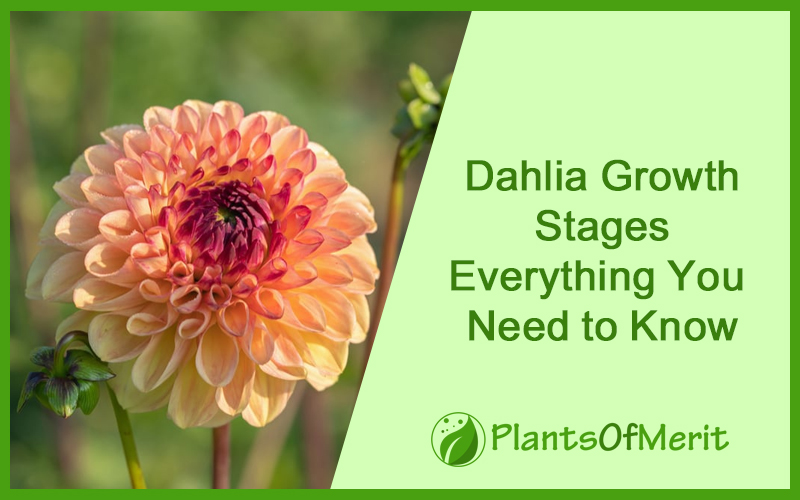When it comes to planting flowers in your garden, Dahlia is that one plant you won’t be disappointed with. It’s stunning, available in a variety of colors, and fairly easy to grow, provided that you are following the right growing techniques.
Dahlia is a perennial plant, so flowering generally starts at the beginning of the first year, following which you can expect an abundance of flowers each year without much effort put into tending to the plant.
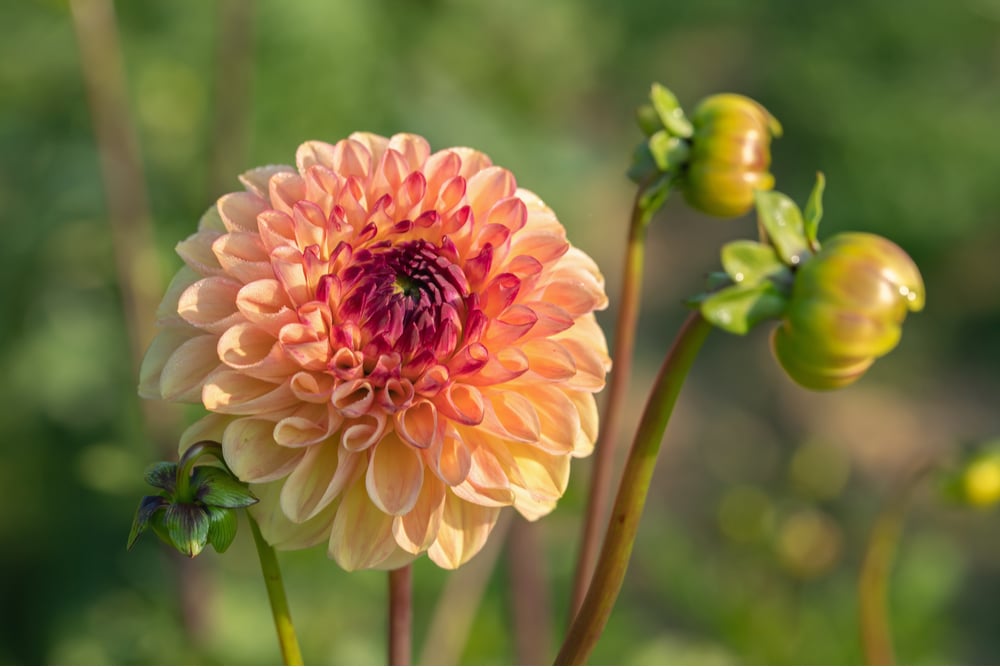
Besides being visually appealing, Dahlias are also very versatile. You can use them for different occasions, they don’t cause a lot of allergies and they are very resilient, which means that you won’t have to worry about the plant dying in the middle of nowhere without a warning.
Since Dahlia is a flowering plant, most beginner gardeners are afraid and intimidated by growing it. This article will help you navigate through that challenge and help you grow your Dahlia plant in the backyard without any compromise at all.
What are the Growing Stages of a Dahlia Plant?
Irrespective of the color of the dahlia you are planting, the growth and development are pretty much the same for every variant. This means that you shouldn’t have a hard time growing the Dahlia plant, provided that you follow the techniques we will be discussing in this particular article.
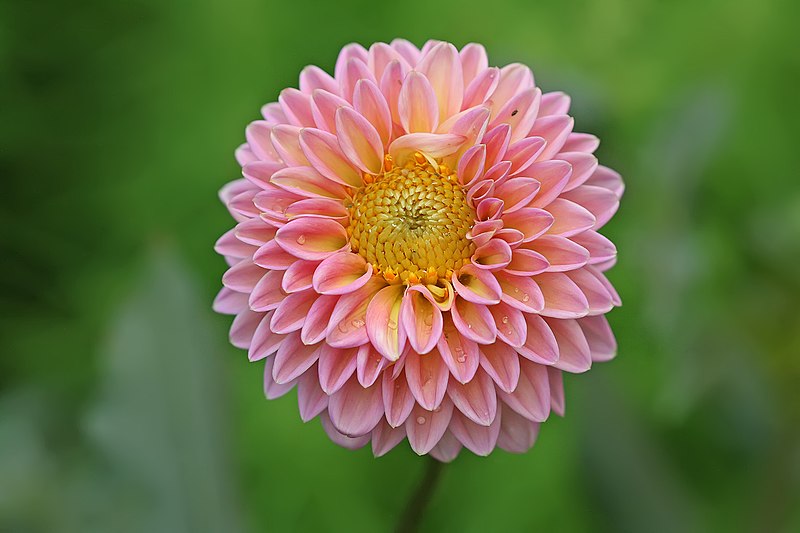
If we had to break down the life cycle of a Dahlia plant, it consists of 6-7 stages, and sometimes less, depending on how you view its growth.
For better understanding and to not prolong things for you, we will be highlighting the top 4-5 growth stages of a Dahlia plant and how you can navigate through the same to grow the plant indoors, on your terrace, or even in your backyard.
Stage 1 – Planting and Seed Germination
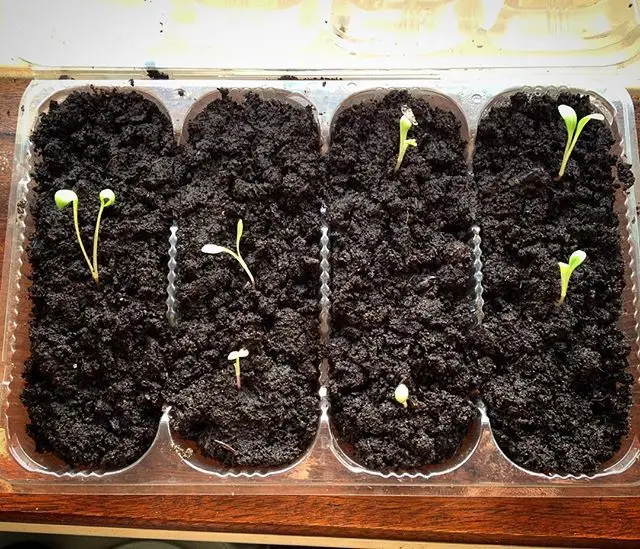
Like most of the other flowering plants, even Dahlia starts with a seed. The seed stage is where the embryo is, which then germinates and develops into a fully-grown mature Dahlia plant with time.
If you are entirely clueless and don’t have an idea of what a dahlia plant seed looks like, it resembles small black pellets with a tapered appearance. Before planting, the seeds need to be stored somewhere dark and warm for 6-8 weeks to prevent the risks of frost.
Also, once planted, the seeds take around 100-120 days to form the fully mature dahlia plant and the flowers. When planting the seeds, ensure that the surrounding temperature is around 70 degrees Fahrenheit because that’s what makes all the difference.
Once the seeds are planted, it can take up to 21 days for the seeds to germinate. Your work during this period is to supply the plant with all the essential nutrients and moisture it needs to grow without any inhibition.
Since the dahlia plants have tap roots, sunlight exposure has to be limited. Doing so shocks the plant and ensures that the growth isn’t compromised at all. Always ensure that the plant gets enough time to form a strong rooting system. The lack of the same will lead to the growth and maturation of the dahlia plant but it won’t sustain for long.
Stage 2 – Vegetative Growth
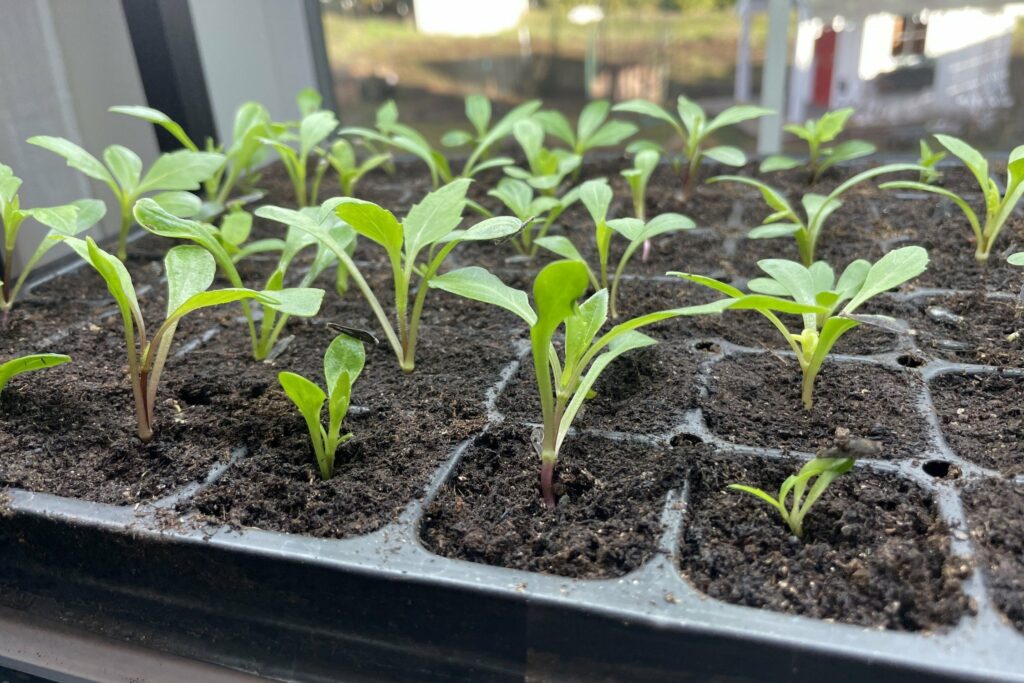
Once the seeds germinate, the next step is where the complexities arise. You have to pay close attention to the progress happening during this period. The vegetative phase is the duration before the dahlia plant is fully mature to then start producing the buds and flowers.
As the plant grows and develops, it keeps forming a strong root system and takes a more vertical growing approach to ensure that the stem is large, thick, and upright. You will also notice the leaves starting to grow and develop during this phase.
Typically, the vegetative growth phase lasts between 6-8 weeks, which accounts for the majority of the development that it takes for the dahlia plant to grow before it starts flowering. The duration might vary, depending on the surrounding environmental factors and the variety of dahlia you are growing.
In most cases, professional gardeners arrest the vegetative growth of the dahlia plant once it reaches 10-12” in length. The shortening of the vegetative period then reflects on the actual flowering process of the plant.
During the vegetative phase, the Dahlia plant will grow around 1-2” each week, but the flowering phase soon follows, so keep that into consideration as well.
Side note: If you are starting to grow your Dahlia in a container and then want to transfer the germinated seedling to the outside, you’d have to do it at the beginning of the vegetative phase as well. Also, only do that with the weather condition into account. You don’t want to shift the seedlings outside if the weather outside is rough and too windy or rainy.
Stage 3 – Reproductive Stage
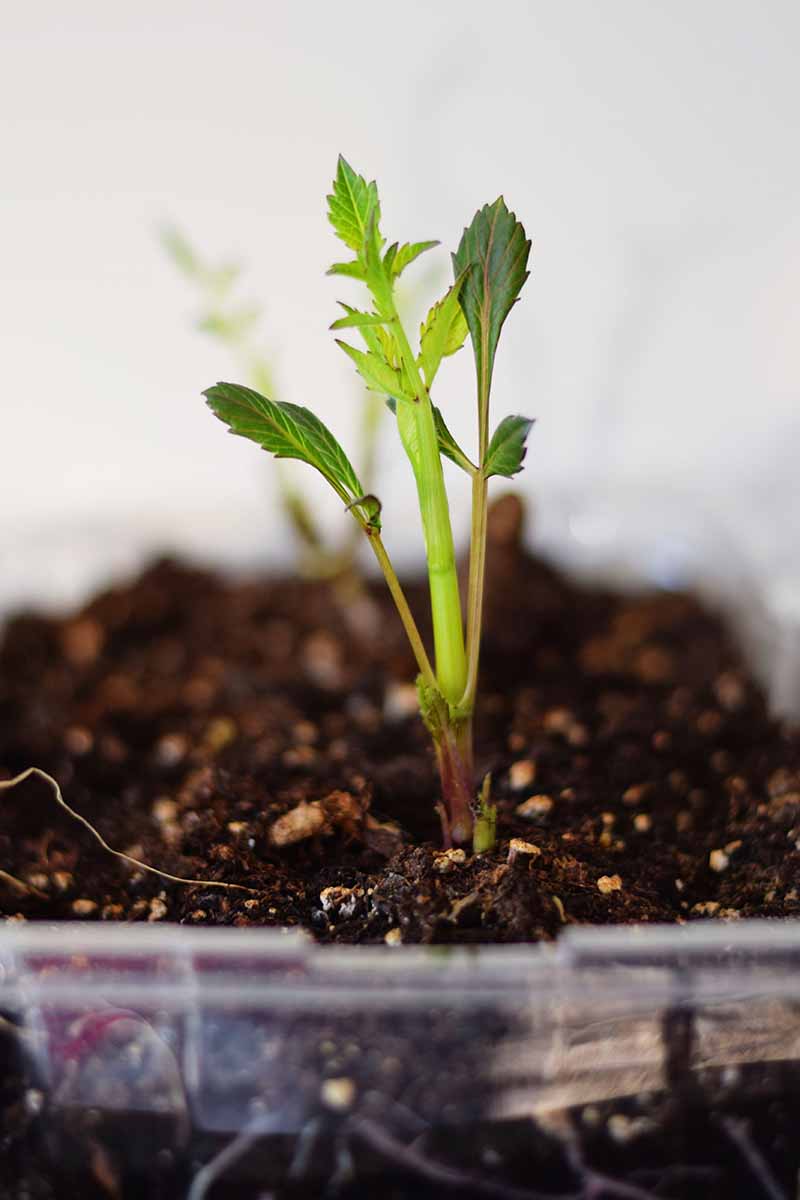
Soon after the vegetative stage is the reproductive stage. Like the previous one, even this particular growth and development stage matters a lot. This is the phase just before the flowering starts, so you know for a fact that it’s critical.
There is a shift in resource utilization and energy consumption during this phase because now the dahlia plant is focused on producing buds and flowers instead of producing the leaves, so keep that into consideration.
If you notice the pale green petals coming out of the plant, be assured that they aren’t flowers, even though they might look like them. Instead, those also don’t contain any pistil that contributes to the reproduction of the plant.
What gravely affects the reproductive stage in a Dahlia plant’s growth is the environmental factors. Harsh and extremely cold weather leads to damage, fading color of the petals, stunted growth, and lack of flowering in the plant. So, if you notice any of these above complications, be assured that you have to pay attention to the weather conditions.
Not paying attention to these factors will put all your efforts to waste. So, take a quick look at the plant to determine if anything is wrong.
Stage 4 – Flowering
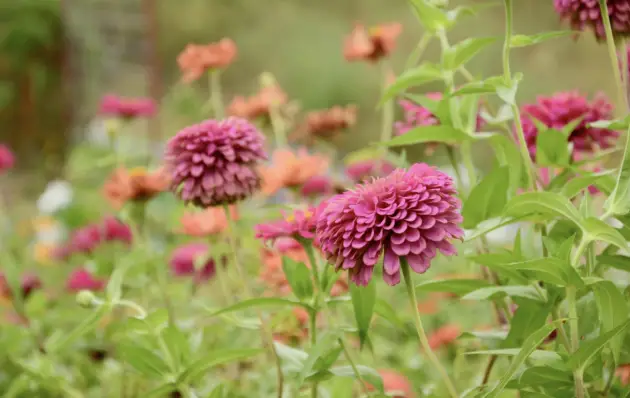
Now, we have come down to the most crucial stage in growing Dahlia. This is everything you have been waiting for all this while and the reason you have put in the kind of effort and time that you did.
For those who are clueless, the flower of a dahlia plant is the sexual reproductive organ. The successful formation of the buds, followed by the bright-colored flowers indicates that you have done all the above steps the right way.
Stage 5 – Harvesting
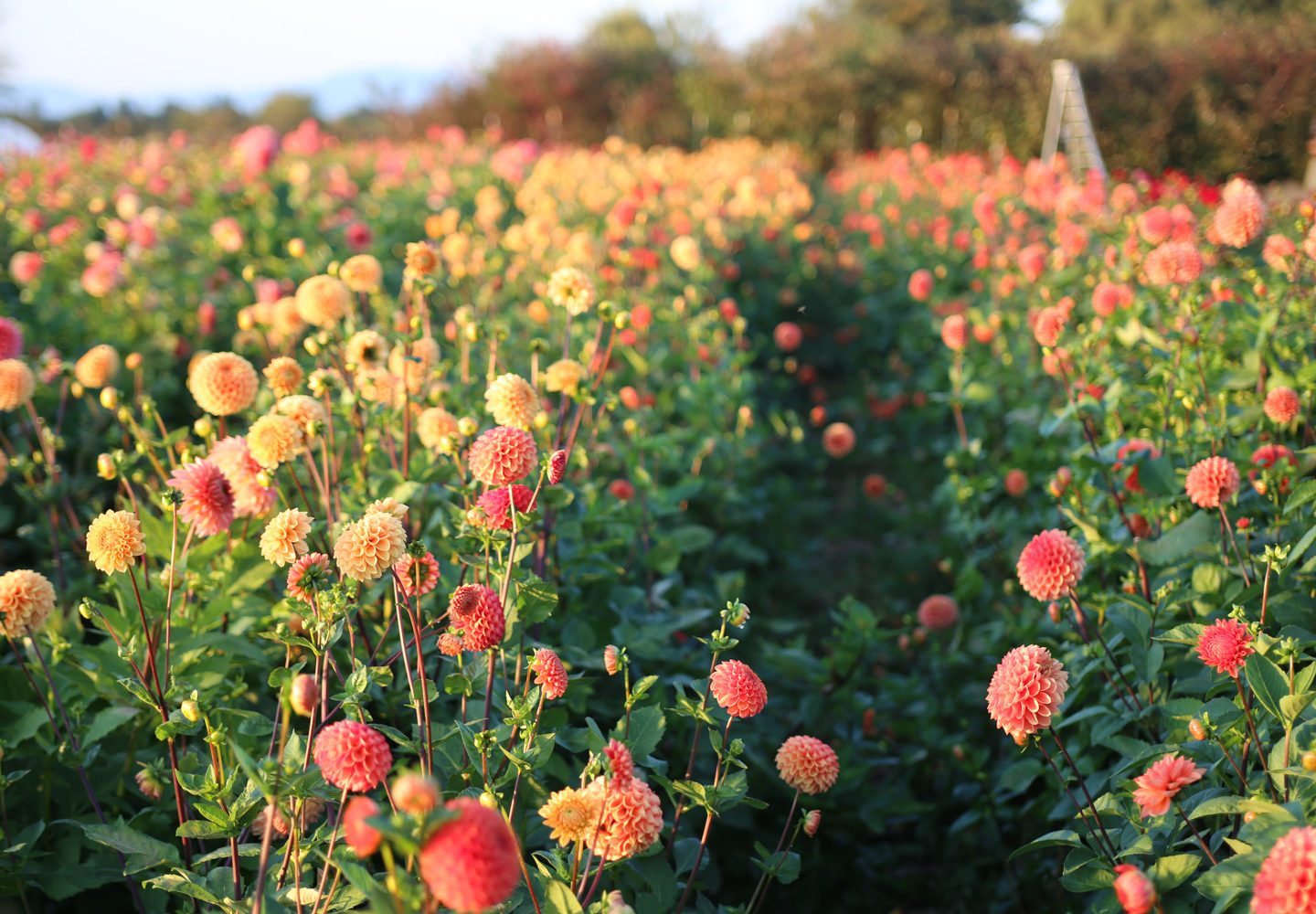
The last stage in growing your Dahlia plant in your garden is to harvest the flowers. If you notice all the buds transformed into flowers with bright-colored petals, you can snip and remove the flowers from the plant.
Besides that, if you plan to leave the petals on the stem of the plant, you might have to leave the roots and the leaves in the plant or later use them for regrowing the plant again.
The purpose of use depends on what you want to do. Do you want to leave the plant so it can grow and produce more flowers later or do you want to replant and regrow more dahlia plants?
How to Grow Best Quality Dahlia Plants?
Now that you have a clear idea about the growth stages of a Dahlia plant, the next thing we need to focus on is the care tips. How do you ensure to grow the best quality dahlia plant that produces large and good-quality flowers for later use?
Every step in growth and development makes all the difference. If you want the plant to grow optimally, you have to pay close attention to each step in the way.
Here are some of the tips you need to keep a check on:
1. Tips for Planting Dahlia
The first step in growing dahlia is to prepare and plant the seeds for germination. If you don’t pay close attention to this first step, be assured that it will affect all the next steps in the growth of this plant.
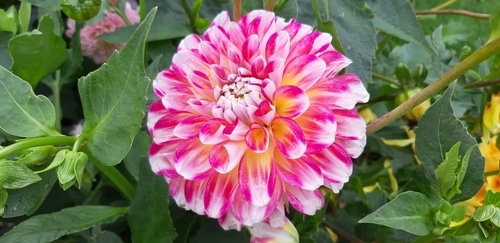
When sowing the seeds, use pots or trays that are filled with seed compost. What this does is keep the soil well-drained and high in nutrients. Also, pay close attention to the temperature since it makes all the difference. You want to regulate and maintain the temperature at 72 degrees Fahrenheit.
Also, if possible, after sowing the seeds, cover the top of the soil with plastic wrap. What this does is retain the moisture, providing the seeds a better chance at growth and germination.
Following that, it is a waiting game for the next one to two weeks, depending on the variety and the weather around. You have to wait until the seedlings are 3” in height before you can consider repotting them into a bigger pot or in your garden bed for the remainder of their development.
2. Tips for Transplanting Dahlia
Once the germination is done and you notice the seedlings pop out of the soil, the next thing is transplantation. You have to wait until spring for the transplantation process because that’s the ideal time.
Also, when transplanting, you have to dig a hole that’s at least 1” deep so that the rooting system can disperse well and you won’t have to worry about damaging the strength of the roots in the plant.
When it comes to transplantation, you need to place each seedling so that the eye is faced upwards. Also, avoid planting it somewhere with compact soil. That’s where things take a turn for the worse. What you have to do instead is transplant it somewhere with loose soil.
During the transplantation, you also need to pay close attention to the watering. The last thing you want is to overwater or underwater the soil. If possible, physically touch the soil to check whether or not the plant requires any kind of water. From there on, you need to leave the plant alone and let it perform the rest of the growth and development.
3. The resilience of the Dahlia Plant
Now, another factor that’s very important to highlight here is the plant’s resilience. Dahlia plant is quite hardy, provided that you maintain the quality of growth. You don’t want the surroundings to be extremely cold because that’s what leads to complications.
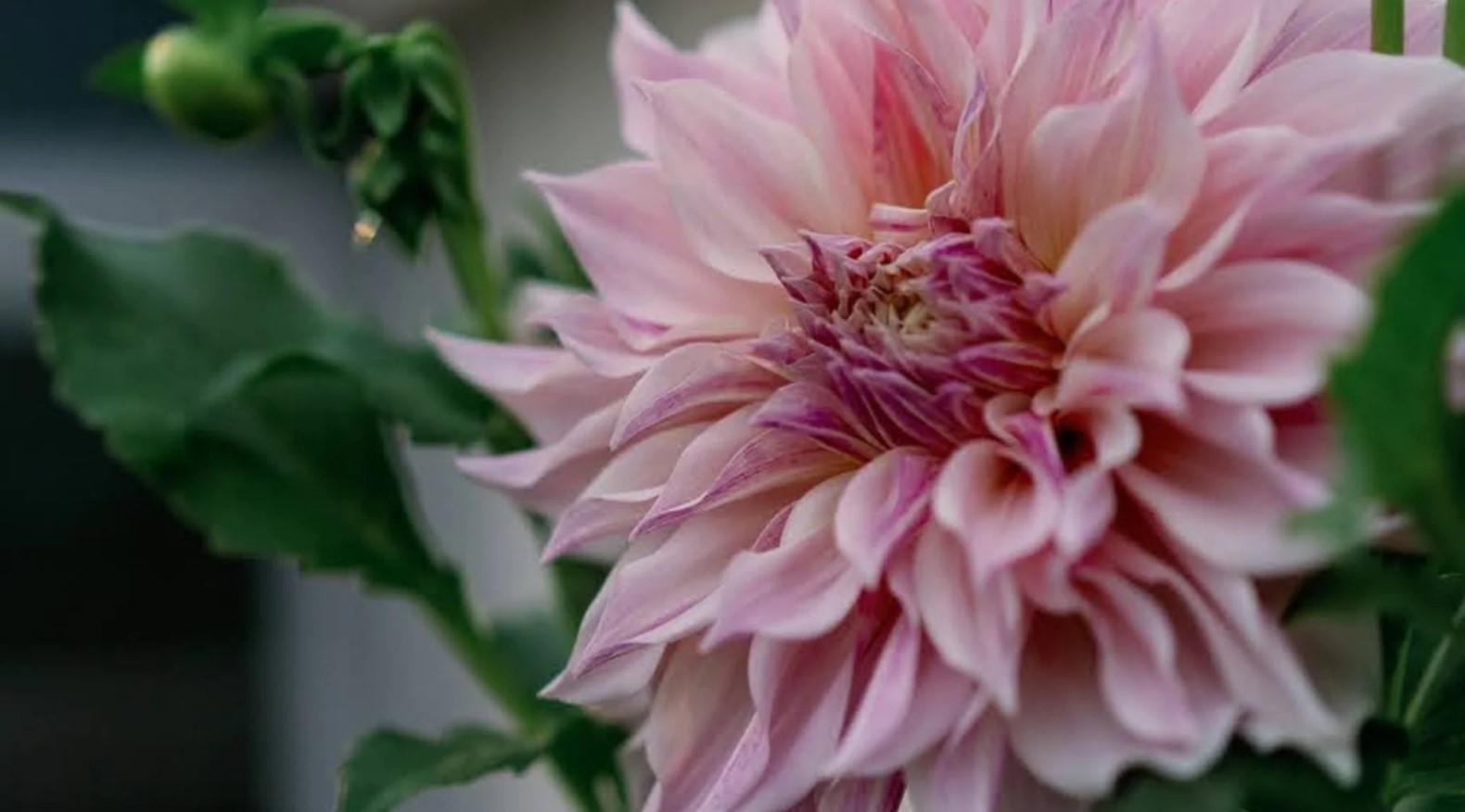
The plant grows without any hassle during the spring season, so keep them in a well-mulched area and you are all set and good to go. If required, you can also cut down and snip the edges around the blooms if you find everything overcrowding.
4. Pests to be Mindful of
Dahlias, as we mentioned, are pretty resilient. However, like most plants, even they require a lot of attention. If you are worried about the plant’s growth, what we’d recommend you do is keep an eye out for pests, including slugs and snails.
They can munch down on the leaves and flowers, completely damaging them in the process. If you notice holes in the leaves, it is a sign of pest infestation.
What you can do in that case is spray the entire plant down with some water or you can use an organic pesticide to see if that helps.
How Long do Dahlias Live?
Dahlias can live up to 3-5 years, which goes to show that your initial bout of hard work for the first 3-4 months can last you with bright and full flowers for the upcoming few years.
However, with more hybrids and varieties of dahlias coming up, it isn’t surprising that these plants live for quite a long time without any questions being asked.
Conclusion
Growing dahlias isn’t as complicated as you think. With the right techniques and tricks, you too should be able to navigate through the process in no time. The only factor we’d recommend prioritizing is the season you are planting it in and the location as well. A mature dahlia plant needs prolonged sunlight, so plan things accordingly.

